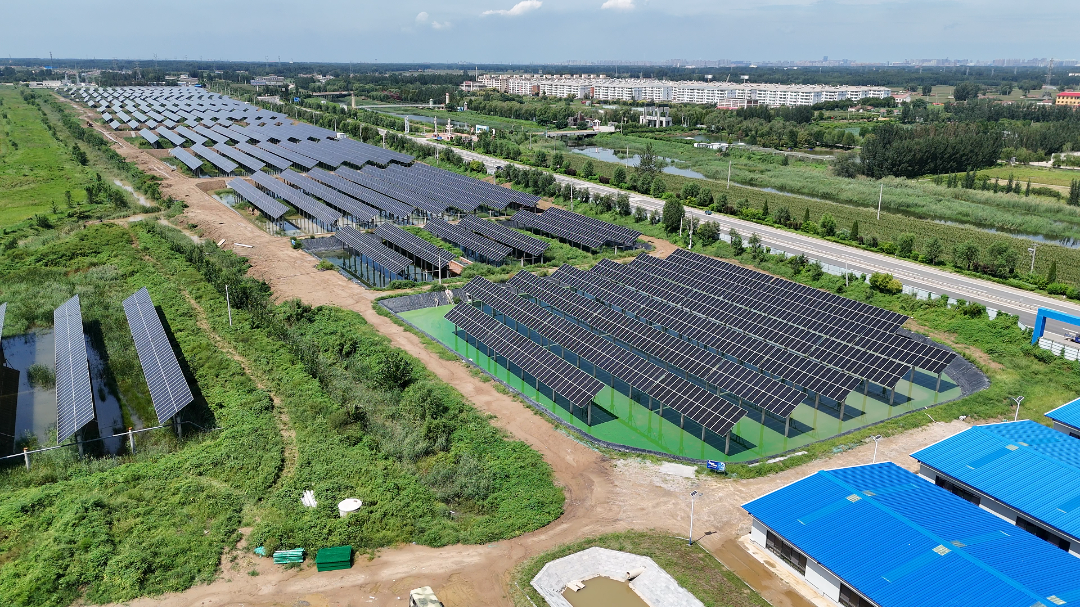When people think of fishery–PV complementarity projects, the first images that come to mind are floating solar panels and shimmering ponds filled with fish. While these elements symbolize the visible harmony of clean energy and aquaculture, the real backbone of power delivery lies underground and across transmission lines—transformer cables.
These critical components ensure that electricity generated by solar arrays is safely stepped up, transmitted, and integrated into the regional grid.
Why Transformer Cables Are Essential
In large-scale floating PV stations like the 39MW Shandong project, solar modules produce low-voltage DC power that is converted to AC by inverters. However, to move electricity efficiently over long distances, it must be stepped up to medium-voltage (MV) or even high-voltage (HV) levels via transformers.
Transformer cables are the arteries of the system, carrying this energy with minimal losses while withstanding environmental and mechanical stresses.
Technical Specifications of Transformer Cables
-
Voltage Levels
-
Common ratings: 6/10kV, 8.7/15kV, 12/20kV, and 18/30kV depending on project design.
-
Suitable for connecting inverters to step-up transformers and transformers to substations.
-
-
Conductor Material
-
Copper: Excellent conductivity, mechanical strength, and thermal performance.
-
Aluminum: Cost-effective and lighter, often used for long-distance overhead transmission.
-
-
Insulation
-
XLPE (Cross-linked Polyethylene): Industry standard for MV cables due to thermal stability and dielectric strength.
-
Resistant to heat, moisture, and electrical stress.
-
-
Armoring & Sheathing
-
Steel wire armoring (SWA) or corrugated aluminum sheath for mechanical protection.
-
Outer sheath designed for UV, water, oil, and chemical resistance, critical in fishery environments.
-
Design Considerations in Fishery-PV Projects
-
Corrosion Resistance: Exposure to high humidity, salt mist, and organic compounds from aquaculture demands specialized protective layers.
-
Routing and Installation: Transformer cables are often buried underground or laid in conduits to protect against external damage.
-
Mechanical Durability: Cables must withstand tension during installation across ponds or over long transmission spans.
-
Safety Standards: Must comply with IEC 60502, GB/T 12706, and other national/international certifications.
Case Reference: Shandong 39MW Fishery-PV Station
In this project:
-
Over 20 km of transmission lines were installed using MV transformer cables.
-
Voltage step-up was achieved with 27 high towers and transformer stations, requiring cables rated at 10–20kV.
-
XLPE-insulated, armored copper cables ensured reliable power delivery despite harsh environmental conditions.
The successful integration of these cables allowed the project to deliver 37.5 million kWh of clean energy annually, equal to powering tens of thousands of households.
Future of Transformer Cables in Floating PV
As floating solar grows, so will the demand for advanced transformer cables that can handle higher voltages, reduce line losses, and withstand challenging aquatic conditions. Future developments may include:
-
Halogen-free flame-retardant designs for enhanced fire safety.
-
Anti-biofouling coatings to resist algae or microbial growth.
-
Smart monitoring systems embedded in cables to detect faults and prevent downtime.
Conclusion: The Silent Enablers of Green Power
While solar modules capture the headlines, transformer cables are the silent enablers that ensure fishery-PV complementarity projects succeed. Without them, clean electricity could not flow seamlessly from ponds to power grids.
In the journey toward a sustainable future, choosing the right transformer cables—safe, efficient, and durable—means choosing reliability for decades of operation.
Winpower Cable is a provider of connection solutions for the new energy system.
Our main products: Solar PV Cable, Energy Storage Cable, EV Charging Cable, Solar PV Cable Harness, Energy Storage Cable Harnesses, and Automotive Cable.
Winpower Cable has passed UL, TUV, VDE, CE, CSA,CQC Certification.
Our main markets: United States, Europe, Middle East, Southeast Asia. And we have 13 years of export experience.
Our world-renowned partners: ABB Cable, Tesal, Simon,Solis,Growatt,Chisage ess.
Post time: Sep-23-2025

